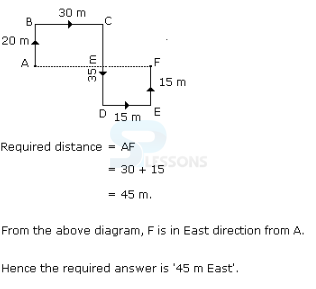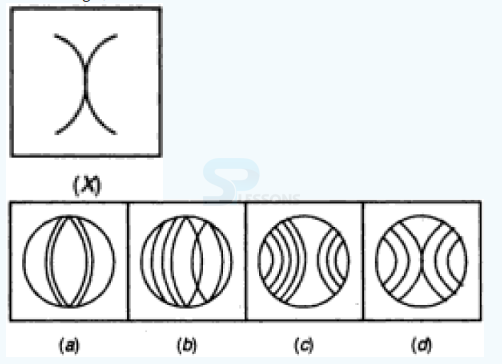 Introduction
Introduction
Scheme of Preliminary Examination for recruitment to the post of Assistant Administrative Officers (AAOs) in LIC is as follows:
- Preliminary Examination consisting of objective test will be conducted online.
- The test will have three sections (with separate timings for each section).
 Pattern
Pattern
| Name of the tests | Number of Questions | Maximum Marks | Medium of Exam | Minimum Qualifying Marks | Duration | |
|---|---|---|---|---|---|---|
| SC/ST | Others | |||||
| Reasoning Ability | 35 | 35 | English & Hindi | 16 | 18 | 20 minutes |
| Quantitative Aptitude | 35 | 35 | English & Hindi | 16 | 18 | 20 minutes |
| English Language with special emphasis on grammar, vocabulary and comprehension | 30 | 30 | English | 9 | 10 | 20 minutes |
| Total | 100 | 70 | 1 hour | |||
- English Language test will be of qualifying nature and the marks in English Language will not be counted for ranking.
- Candidates equal to 20 times of number of vacancies in each category, subject to availability, will be shortlisted for Main examination.
 Samples
Samples
Number Series
1. In following question, a number series is given with one term missing. Choose the correct alternative that will same pattern and fill in the blank spaces. 2, 3, 5, 7, 11, x, 17
- A. 12
B. 13
C. 14
D. 15
- A. 97
B. 98
C. 99
D. 100
- A. 92
B. 115
C. 127
D. 131
- A. 9
B. 11
C. 13
D. 15
- A. 228
B. 256
C. 352
D. 456
- A. OLNNIE
B. ONILEN
C. NOILEN
D. LNOENI
E. ONNLIE
- A. V X D Q
B. XUGX
C. ROAR
D. VSOV
E. V Z C P
- A. M E X I C O
B. MERCURY
C. JAPAN
D. MIDNIGHT
E. H O N D U S
- A. IBLLION
B. IBOILLN
C. IBLLOIN
D. IBLOILN
5. IBOLLIN
- A. W e D N e S d A Y
B. W E d n E S d A Y
C. T H U R S d A Y
D. T h U r S d A Y
E. f r I d A Y
- A. 1
B. 2
C. 3
D. 4
E. 5
- A. 1
B. 2
C. 3
D. 4
E. 5
- A. 1
B. 2
C. 3
D. 4
E. 5
- A. 1
B. 2
C. 3
D. 4
E. 5
- A. 1
B. 2
C. 3
D. 4
E. 5
- A. 8
B. 9
C. 10
D. 11
- A. 20th
B. 19th
C. 18th
D. 17th
- A. 40
B. 44
C. 50
D. 55
E. 58
- A. 20th and 24th
B. 24th and 20th
C. 25th and 21st
D. 26th and 22nd
E. None of these
- A. First
B. Second
C. Fourth
D. Sixth
- A. KVIJUJ
B. JUUVK
C. ITVTL
D. KUUVJ
- A. HNE
B. PGI
C. STN
D. CAT
- A. XBZ
B. TGU
C. MCO
D. FUT
- A. M
B. J
C. D
D. S
- A. uwy
B. vya
C. vxz
D. axy
- A. 15 m West
B. 30 m East
C. 30 m West
D. 45 m East
- A. North-East
B. North-West
C. South-East
D. South-West
- A. East
B. West
C. South
D. Data is inadequate
- A. South-East
B. North-West
C. South
D. West
- A. North
B. North-West
C. North-East
D. East
- A. speed
B. hiking
C. needle
D. direction
- A. winter
B. bear
C. dream
D. sleep
- A. dish
B. soup
C. spoon
D. food
- A. aware
B. ignorant
C. miserable
D. tolerant
- A. gloomy
B. means
C. petty
D. helpful
- A. 11
B. 18
C. 20
D. 21
- A. 20 years
B. 22 years
C. 25 years
D. 27 years
- A. 18
B. 36
C. 45
D. None of these
- A. 23 years
B. 25 years
C. 33 years
D. 35 years
- A. 20
B. 25
C. 30
D. Data inadequate
- A. Brother
B. Sister
C. Nephew
D. Cannot be determined
- A. Brother
B. Uncle
C. Cousin
D. Data is inadequate
- A. Son
B. Brother
C. Cousin
D. Brother-in-law
- A. Mother-in-law
B. Aunt
C. Wife
D. None of these
- A. Nephew
B. Uncle
C. Father or Uncle
D. Father
- A. if the case is to be referred to the Principal.
B. if the case is to be referred to Vice Principal.
C. if the candidate is to be selected.
D. if the information is inadequate to take a decision.
E. if the candidate is not to be selected.
- A. if the case is to be referred to the Principal.
B. if the case is to be referred to Vice Principal.
C. if the candidate is to be selected.
D. if the information is inadequate to take a decision.
E. if the candidate is not to be selected.
- A. if the case is to be referred to the Principal.
B. if the case is to be referred to Vice Principal.
C. if the candidate is to be selected.
D. if the information is inadequate to take a decision.
E. if the candidate is not to be selected.
- A. if the case is to be referred to the Principal.
B. if the case is to be referred to Vice Principal.
C. if the candidate is to be selected.
D. if the information is inadequate to take a decision.
E. if the candidate is not to be selected.
- A. if the case is to be referred to Executive Head.
B. if the case is to be referred to Vice President.
C. if the candidate is to be selected.
D. if the information is inadequate to take a decision.
E. if the candidate is not to be selected.
- A. 1
B. 2
C. 3
D. 4
- A. 1
B. 2
C. 3
D. 4
- A. 1
B. 2
C. 3
D. 4
- A. 1
B. 2
C. 3
D. 4
- A. 1
B. 2
C. 3
D. 4
- A. Sunday
B. Saturday
C. Friday
D. Wednesday
- A. Sunday
B. Monday
C. Tuesday
D. Friday
- A. Wednesday
B. Saturday
C. Tuesday
D. Thursday
- A. 22
B. 24
C. 44
D. 48
- A. 20
B. 22
C. 24
D. 48
- A. 1
B. 2
C. 3
D. 6
- A. Fig.1
B. Fig.2
C. Fig.3
D. Fig.4
- A. 2
B. 3
C. 4
D. 6
- A. 2
B. 4
C. 5
D. 6
- A. 2
B. 3
C. 6
D. Cannot be determined
























